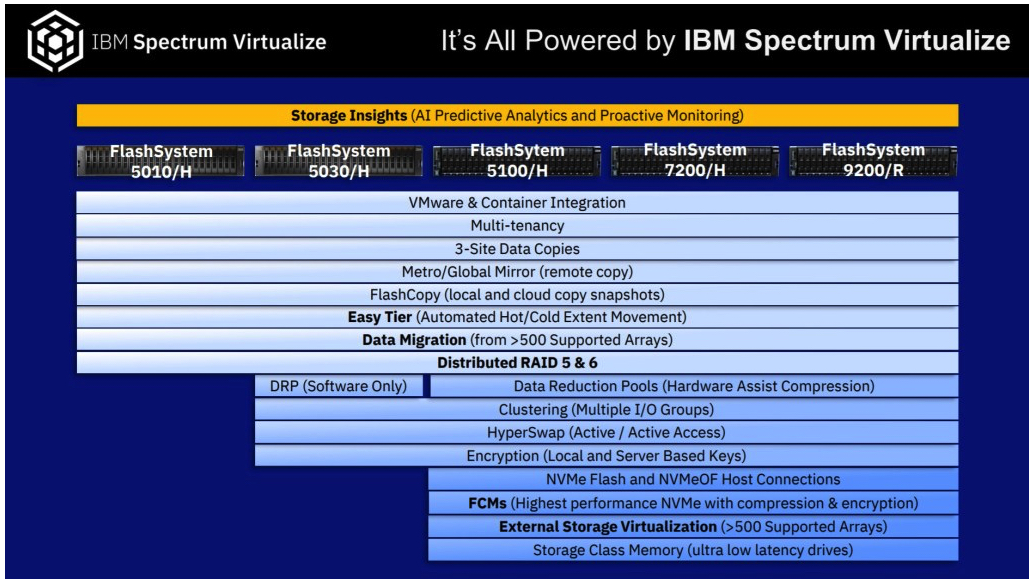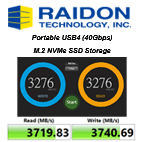Six Implications of IBM FlashSystem Announcement
For enterprise storage market
This is a Press Release edited by StorageNewsletter.com on February 14, 2020 at 2:06 pm This article was written by Ken Clipperton, lead analyst for storage, DCIG LLC, on February 13, 2020.
This article was written by Ken Clipperton, lead analyst for storage, DCIG LLC, on February 13, 2020.
Six Implications of the IBM flashSystem Announcement
IBM announced a new family of FlashSystem storage systems on February 12. The announcement has several implications for the enterprise storage marketplace.
As expected, IBM announced new levels of performance, capacity, and storage density. Unexpectedly, the announcement included the demise of the Storwize brand. The new FlashSystem family consolidates entry-level, mid-range and high-end block storage under the FlashSystem brand.
Simplification matters
In an era of technology-enabled business transformation, enterprises must realize better results from their information technology investments. Enterprise technology staff are under pressure to provide more responsive services to the business while delivering an “always-on” experience to internal end users and external customers.
To meet these demands, enterprise technologists are embracing automation and analytics to eliminate manual processes and streamline infrastructure management tasks. Where feasible, many enterprises are moving toward outsourcing these tasks to the vendors that supply the equipment. For example, HPE’s GreenLake IT-as-a-Service offering is one of the fastest growing businesses within HPE and is now a multi-billion dollar business.
The IBM addresses simplification requirements by basing the entire flashSystem family on its Spectrum Virtualize SDS. This results in a consistent set of APIs for automation. IBM also offers cloud-based storage analytics and Storage-as-a-Service as part of its flashWatch guarantee program.
NVMe and NVMe-oF will lead to simplified storage portfolios based on SDS
The ecosystem around NVMe and NVMe-oF has matured to the point that every major storage vendor now offers products built on these technologies. The inherent low latency and high bandwidth of NVMe and NVMe-oF have eliminated the performance boundaries that defined many legacy storage systems. Now more than ever it is the software that matters.
The rise of containerized infrastructure complements the rise of SDS. Storage vendors are breaking out capabilities from their monolithic storage OSs into individual containerized applications and then making those applications available across their storage system portfolios or weaving them together into new SDS-based products. HPE Primera is an excellent example of this trend.
Enterprise storage vendors that currently offer multiple enterprise storage families are likely to simplify their portfolios around a single SDS-based storage family. The IBM announcement exemplifies this trend. Similarly, Dell EMC has been candid about the fact that it will announce a new software-defined midrange enterprise storage offering in early 2020 that will replace its SC, Unity and XtremIO families.
Bifurcation of enterprise storage
into block storage systems and file storage systems
The IBM announcement is all about enterprise block storage. There was no mention of unified storage capabilities. The same is true of HPE Primera. Even NetApp now offers some of its AFF series as block-only ONTAP All SAN arrays. For high performance, the focus is FC-NVMe, a block-only protocol.
Block storage is about terabytes, file storage about petabytes
For most enterprises, block storage is about terabytes of structured data and file storage is about petabytes of unstructured data. Key consideration for block storage is balancing capacity, performance and availability requirements within a desired failure domain.
The FlashSystem Family Overview FAQ provides guidance for selecting the right IBM flashSystem product.
It suggest the following typical capacities as guidance for selection among the products:
- Model Number Typical – Capacity (Raw)
- FlashSystem 5100/H – 10TB
- FlashSystem 5030/H – 100TB
- FlashSystem 5100/H50 – 100TB
- FlashSystem 7200/H100 – 200TB
- FlashSystem 9200200 – 400TB
In contrast, enterprises are experiencing an explosion in the quantity and uses for unstructured file data. Many enterprises now have multiple petabytes of unstrucured data to store and manage. Modern file storage solutions such as Qumulo are designed to handle these multi-petabyte file-based storage requirements.
Millions of IO/s hero numbers are not commitments
The IBM announcement claims up to 18 million IO/s for the flashSystem product line. This claim is based on 100% read workloads. While some enterprise applications are read-heavy, this kind of hero number should not be the basis of a storage purchase decision.
Happily, IBM and other vendors offer tools such as StorM that estimate the likely performance for an enterprise’s actual workloads and data center infrastructure. Enterprise infrastructure professionals should take advantage of such tools. Beyond estimates, the best input to a purchase decision is a proof-of-concept implementation with the customer’s own data center.
Performance resources still matter
As the following chart from the FlashSystem overview FAQ makes clear, the core performance resources of an array still matter.

(Source: IBM)
The lower end models lack the CPU, DRAM and connectivity to support the full range of enterprise features that Spectrum Virtualize offers. Thus, enterprise technologists must still pay attention to these core performance resources in order to ensure that the storage system will meet the requirements of their enterprise.














 Subscribe to our free daily newsletter
Subscribe to our free daily newsletter


